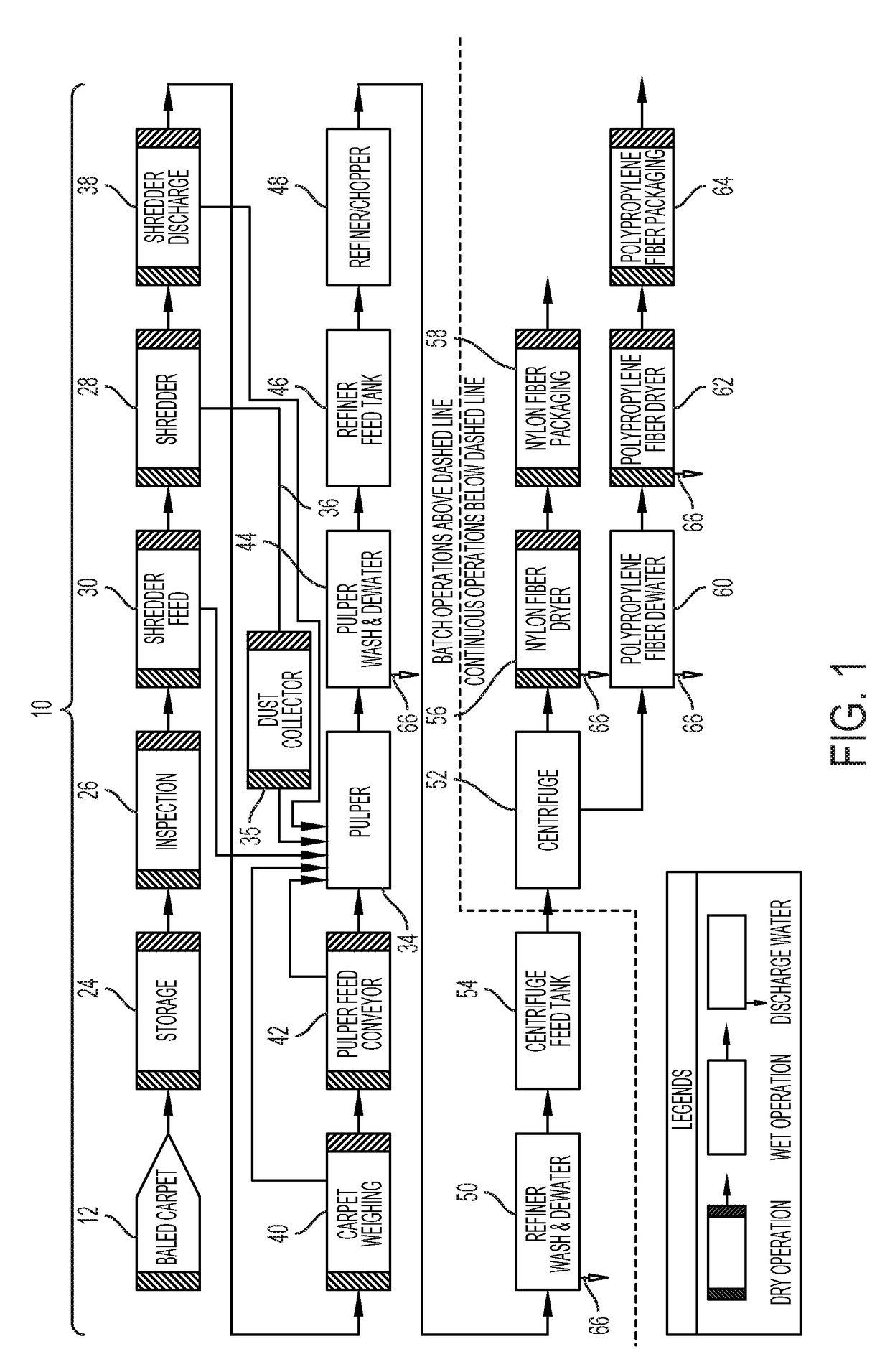Advanced manufacturing system to recycle carpet
a manufacturing system and carpet technology, applied in the field of advanced manufacturing process and plant to recycle carpet, can solve the problems of laborious and ineffective recovery of significant portion, loss of over 40% of the amount of pcc material that is actually recycled, and increase the amount and quality of nylon fiber recovered, and reduce the amount of particulates and dust. , the effect of cost-effectiveness
- Summary
- Abstract
- Description
- Claims
- Application Information
AI Technical Summary
Benefits of technology
Problems solved by technology
Method used
Image
Examples
Embodiment Construction
[0042]A carpet recycling plant 22 and process 10 of recycling post-consumer carpet to separate nylon fibers, polypropylene fibers, calcium carbonate and other materials within a carpet 20 is disclosed herein. The carpet 20 is initially processed in a dry processing room 32 to reduce the size of the carpet 20 to about 4″ by 4″ to about 8″ by 8″ from a larger format (e.g. room sized carpet). The dry processing room 32 is an air controlled room so that dust and other particulate materials produced from the reduction process (i.e. shredder 28) and other dry processing equipment does not escape into the environment and cause an environmental, employee health or safety issue. The reduced size carpet is transported and put into a wet pulper 34 which may be located outside of the dry processing room 32. Dust and other particulates produced by the reduction process may collectively contain nylon fibers, polypropylene fibers, calcium carbonate and household dirt. The dust and other particulat...
PUM
| Property | Measurement | Unit |
|---|---|---|
| surface area | aaaaa | aaaaa |
| size | aaaaa | aaaaa |
| size | aaaaa | aaaaa |
Abstract
Description
Claims
Application Information
 Login to View More
Login to View More - R&D
- Intellectual Property
- Life Sciences
- Materials
- Tech Scout
- Unparalleled Data Quality
- Higher Quality Content
- 60% Fewer Hallucinations
Browse by: Latest US Patents, China's latest patents, Technical Efficacy Thesaurus, Application Domain, Technology Topic, Popular Technical Reports.
© 2025 PatSnap. All rights reserved.Legal|Privacy policy|Modern Slavery Act Transparency Statement|Sitemap|About US| Contact US: help@patsnap.com



